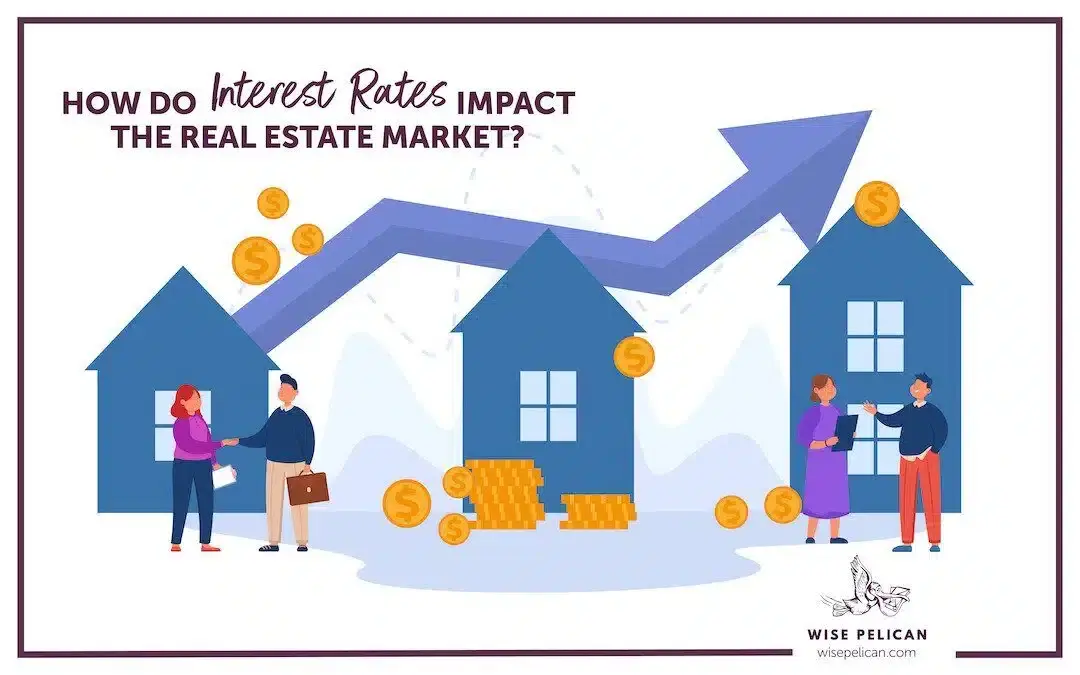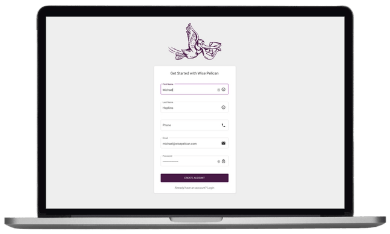It may seem like everyone is talking about interest rates today, prompting questions such as ‘how do interest rates affect real estate.’ Interest rates have been front and center in news headlines recently, so you may not be surprised to hear your fellow real estate agents express their concerns about the impact that interest rates will have on their businesses
Understandably, your home-buying clients may be concerned about how rising interest rates will impact their new mortgage payments. After all, rising interest rates yield higher mortgage payments. In turn, this affects housing affordability for homebuyers.
However, on a broader scale, changes to interest rates can directly and profoundly affect the housing market. As a real estate agent, your livelihood is dependent on the health of the housing market, so you need to stay on top of any current or potential changes to it. What do you need to know about the connectedness of the housing market and interest rates?
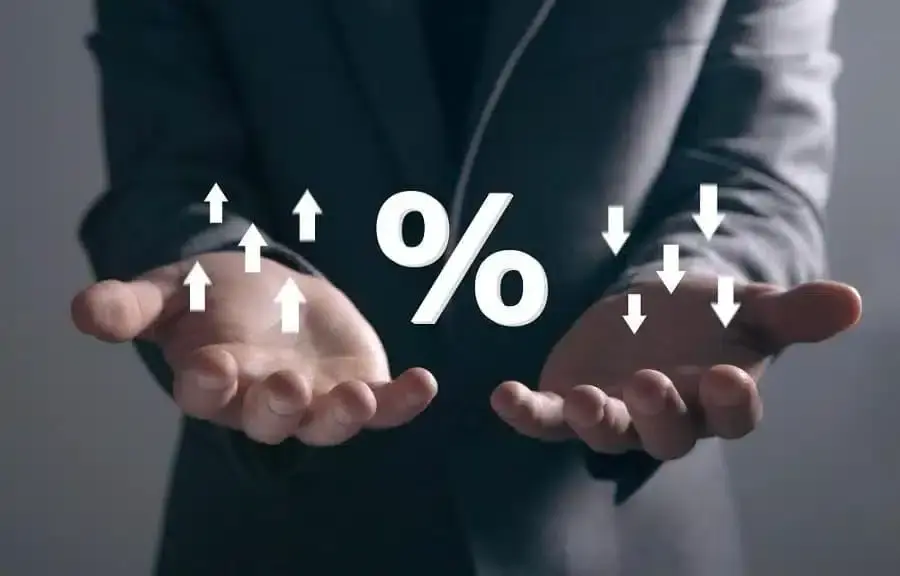
The Impact of Interest Rates on the Housing Market
Interest rates fluctuate on a daily basis, and they do not directly impact the price of a house. For example, rates may increase by 0.1% today and decrease by the same amount tomorrow.
However, despite these minor fluctuations, the price of a specific house that was listed for sale last week may continue to be offered at $400,000. A specific seller may not adjust the sales price for his or her home given such regular and minor fluctuations.
When interest rates move dramatically, however, the affordability of housing in general is impacted, raising questions such as ‘how do interest rates affect real estate?’ For example, buyers who could afford to buy homes in the $400,000 price range may now only be able to afford homes in the $377,000 or $350,000 price range.
Various factors impact the minor daily movements in mortgage rates. These small and regular fluctuations are tied to supply and demand for mortgages and a wide range of other economic factors. Larger changes to interest rates that have long-term effects are tied to the Federal Reserve’s monetary policy.
Generally, the Federal Reserve adjusts its lending rate by a quarter-percent when it chooses to do so but some adjustments have been larger than this. Specifically, the Fed’s Federal Open Market Committee, or FOMC, meets eight times annually. At these meetings, current and projected economic conditions and other factors are reviewed. The FOMC then decides whether to adjust monetary policy or to stay the course.
For 2022, the FOMC has already raised interest rates twice, and it has stated that more increases are likely throughout the rest of the year. When your clients and colleagues express concern about interest rates, this is likely what they are referring to.
For the sake of discussion below, the mention of declining, increasing and static interest rates refers to the Fed’s monetary policy rather than to the minor daily changes to interest rates.

Declining Interest Rates
The FOMC decreased its lending rate dramatically in its meetings throughout the Great Recession that started in 2008. In fact, it lowered the bank’s borrowing rate to near zero, and the rate remained at that level for an extended period of time. Banks and mortgage lenders determine their rates for both fixed and adjustable-rate mortgages based on the Fed’s interest rate plus their margin.
This is why the Fed’s lending rate was below 1% for so long over the last decade while rates for a 30-year fixed-rate loan hovered between 2% and 3% for an extended period of time.
As rates decrease, the affordability of housing increases. Homeowners who may have qualified for a $300,000 home previously may qualify for a $350,000 home when rates are lowered. Some people who had been waiting for the right time to buy a home may be encouraged to do so when rates are lower because of this affordability.
As a result, declining interest rates increase demand in the housing market. This does more than creating a buying frenzy. This places upward pressure on prices. The low interest rates that have been in place over the last decade are among the key reasons why housing prices have ballooned in most areas across the country.
Rising Interest Rates
On the other hand, rising interest rates have a negative effect on affordability. A buyer who may have qualified for a $400,000 mortgage at the end of 2021 may only qualify for a $377,000 mortgage now. In a rising interest rate environment, some potential buyers are priced out of the market.
They simply cannot afford the payments for a mortgage any longer, or they may no longer qualify for a loan. Even buyers who may still qualify may be looking at smaller and more affordable homes. After all, they need to maintain their monthly housing expense at a certain level for the sake of their budget.
Rising interest rates result in a decreased demand for homes, bringing about questions such as “how do interest rates affect real estate.” Lower demand means that homes may sit on the market for longer periods of time. Sellers may have fewer offers and may be in a position to negotiate the price or offer concessions. Generally, rising interest rates do not mean a decline in housing prices. However, you may find that housing prices increase at a much slower pace. Essentially, rising interest rates will cool a hot housing market.
Static Interest Rates
Now that you know how declining and rising interest rates impact the housing market, it may be easy to assume that static interest rates maintain the status quo in the market. However, housing prices and activity do not stagnate when the FOMC holds its monetary position. Consider that the Fed’s rate has been below 1% for the better part of the last decade. Immediately after the Fed slashed rates during the Great Recession, housing prices in many areas were still tumbling because of the market crash.
The lower interest rates served to stabilize the market. By keeping rates low for an extended period of time, the Fed spurred activity when there otherwise may have been little activity. Because of the Fed’s policy to keep rates low over the last decade, housing prices across the country increased dramatically, and mortgage activity gained steam.
On the other hand, if the FOMC raises rates to a high level over the next few years and then decides to maintain rates at that high level, you can expect the opposite effect. When rates remain high, they essentially keep the brakes on the housing market.
There will be some activity, and housing prices may continue to increase slowly. However, you will not see the feverish pace of growth as you did when interest rates were near historic lows.
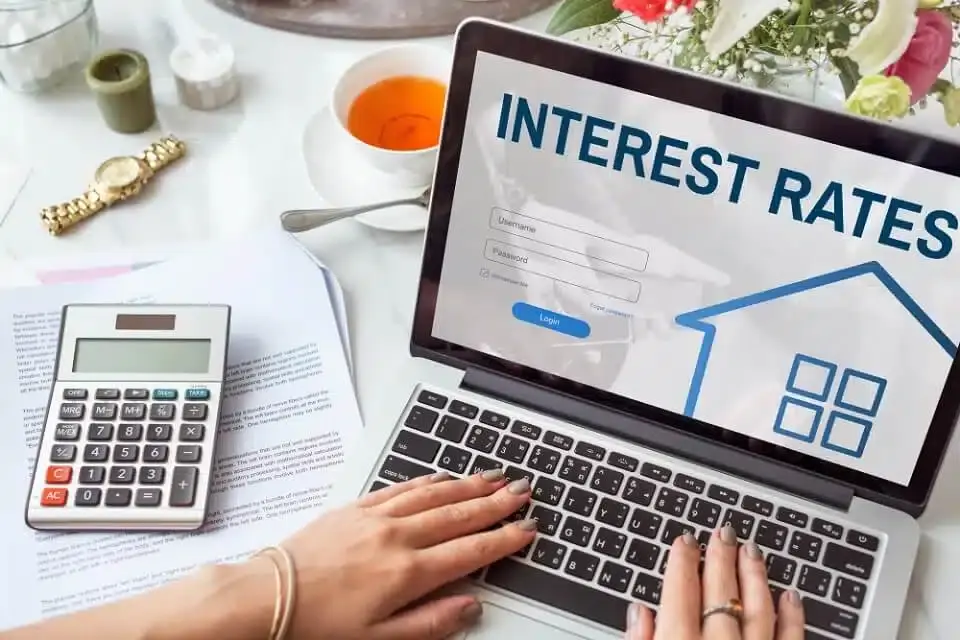
How Do Interest Rates Affect Real Estate? Looking at Interest Rate Trends
To answer the question, how do interest rates affect real estate let’s look at interest rate trends. The highest interest rate for a 30-year fixed-rate mortgage occurred in October 1981, and it was 18.45%. This was a time when inflation was skyrocketing, and the FOMC was responding to rein in inflation.
Between 2000 and 2008, when the Great Recession started, the 30-year fixed interest rate was moving between 6% and 7%, and some of this movement was in response to the Fed’s monetary policy changes.
After the Great Recession, the Federal Reserve made a series of rate cuts, leading to a general downward trend in the 30-year fixed interest rate between 2008 and 2016. However, in 2016, the FOMC started to slowly increase rates. This trajectory was halted in 2019 when the pandemic started.
However, due to a range of more recent issues, inflation has taken off while housing prices have continued to skyrocket. This has resulted in the Fed’s current policy of increasing rates for the near future.
It is important to note that many factors impact the FOMC’s decision to adjust its interest rate. Nobody could have predicted the start of a pandemic prior to 2019, and this unexpected event resulted in plummeting interest rates through the start of 2020.
With this in mind, the Fed has the ability to adjust its policy at any meeting given the conditions at the time. In May 2022, the New York Times reported the Fed had implemented the largest interest rate increase since 2000. Although interest rates affect the finance industry across the board, how does the Federal Reserve affect mortgage rates?
How Do Interest Rates Affect Real Estate? The Federal Reserve’s Impact on Mortgage Rates
Are you wondering why banks’ interest rates are determined by the Federal Reserve’s monetary policy? The Federal Reserve’s rate is essentially its cost to lend money to banks.
This means that the banks must then lend that money to consumers at a higher rate to cover their own costs and to factor in a profit. A bank’s margin on a loan is essentially its markup. With this in mind, banks will immediately increase interest rates after the Federal Reserve announces an increase. There is no waiting period.
Changes in Interest Rates So Far
In 2022, the Federal Reserve increased its rate in March and again in April. The purpose of these two rate hikes has been to slow down inflation. The year-over-year inflation rate in April 2022 was over 8%. Prices almost across the board have increased for consumers recently, and housing has been a key driver in this area.
The average price of a home in the United States is increasing at an annual rate of 14.5%. This has outpaced wages in many cases, so housing has gotten increasingly unaffordable for many people. The two rate hikes that have occurred thus far have already had a cooling effect on the market. Housing prices continue to increase at a somewhat slower pace, and new mortgage applications have declined. While some aspects of the real estate market have already cooled slightly, the market continues to remain hot in many areas.
Projected Interest Rate Adjustments
As a forward-thinking real estate agent, you understandably want to know what the Federal Reserve plans to do to interest rates in the months ahead. It has stated that several more interest rate hikes may be necessary to moderate inflation. More than that, it has indicated that some of the rate hikes at its upcoming meetings for 2022 could be half-percent rather than quarter-percent increases.
This means interest rates could be substantially higher by the end of the year. However, many aspects of the economy and various factors on a global scale are in a state of extreme flux right now. While the Federal Reserve has indicated its intention to increase rates throughout 2022, there is no guarantee that this is what will actually happen.
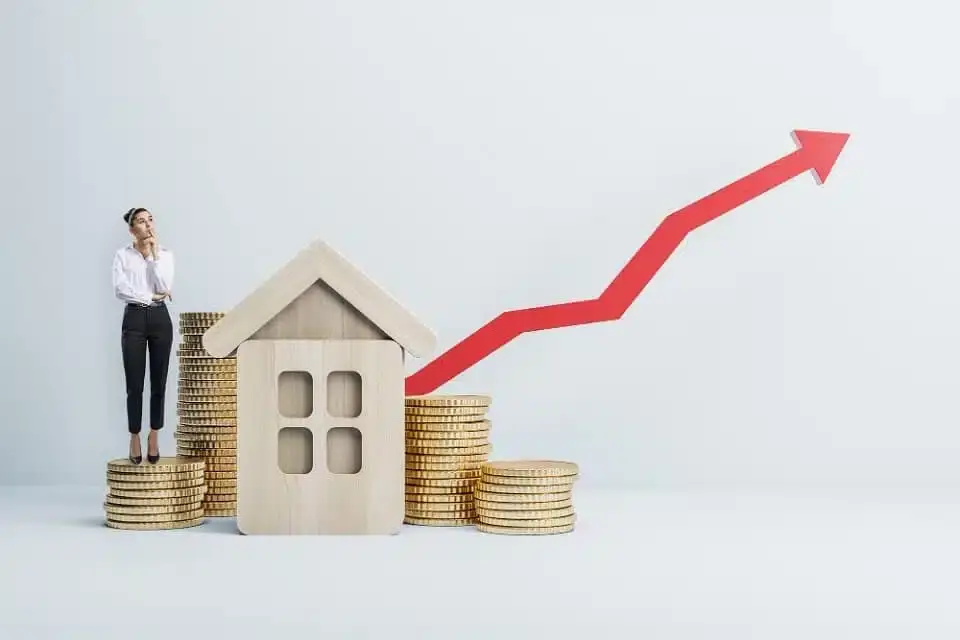
What Rising Interest Rates Mean for Your Real Estate Business
The two interest rate increases that have already taken place at the beginning of 2022 have served to cool the market slightly. The actual effects that you may have experienced thus far, however, will vary based on the market you are active in. How can you expect upcoming rate hikes to impact your business?
Rising interest rates impact both buyers and sellers. Most sellers have plans to buy a new home to move into, and they may not be interested in selling at the moment if housing affordability is a concern. This affects both the availability of active listings and the number of transactions.
Likewise, potential buyers may decide to hold off on buying if rates continue to increase, or they may no longer qualify for a mortgage. The impact of rising interest rates is compounded by rising home prices. There will come a point when many potential buyers simply cannot afford to buy a home with both housing prices and interest rates what they are.
If the trend of rising interest rates continues, you may see a substantial slowdown in your activities. Fewer buyers and sellers could mean reduced income.
Many real estate agents throw in the towel when the market takes a downturn, so you may eventually find that you have less competition when attracting new clients. Initially, however, competition for a dwindling number of clients may increase until some real estate agents make a career switch.
You may have fewer listing presentations in the near future than you have had. This means that you must optimize every opportunity you have to earn the business of a new client.
Likewise, it means that building up your base for referral business is crucial for your continued success in the years to come. Providing exceptional service at all times is critical.
The Need to Educate Homebuyers
You can clearly see that some people who may intend to buy or sell a home in the near future could be priced out soon. Even if they are not priced out, interest rates may make this option far less appealing than it once was.
While interest rates have increased, they continue to be relatively low when you look at historical interest rates over the decades. This means that now may still be a great time to act. However, because interest rates are expected to continue rising, it may be more advantageous to act sooner rather than later.
As part of the excellent service that you provide to your clients, you must educate them on how rising interest rates can impact everything from affordability to the availability of new listings to choose from and more.
While you do not want to pressure a potential client to act before he or she is ready to do so, you do want to ensure that the client has all of the facts necessary to make an informed decision.
How to Reach Homebuyers
How can you get the word out to potential buyers and sellers about the rapidly changing market conditions? If you are like many other successful real estate agents, you have spent time farming a specific community over the last several years or longer.
Farming may have involved knocking on doors, distributing flyers, mailing postcards and more. You can and should continue making these efforts. The homeowners in your farming area may be increasingly paying attention to the housing market. Some of them may even wonder if the time to act has already passed them by.
While you need to stay in front of the community, you also may be more focused on minimizing expenses. After all, you may be expecting your business to slow in the months to come. Postcards are an effective solution.
A well-designed postcard is informative and gripping. Postcard campaigns can be engaging, cost-effective and direct as well. Interest rates may gradually tick up, and the market may gradually cool down. Throughout these changes, you should continue nurturing your farm. Ideally, your farm will receive postcards and other touches from you every six to eight weeks.
Conclusion
You may reasonably expect market conditions to tighten as interest rates continue to increase. With this in mind, the best time to connect with buyers is today.
While you could spend your limited and valuable time trying to design an effective postcard yourself, a better idea is to use one of our proven designs. Explore the possibilities today.
